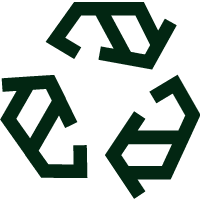Recognising Sustainability
EnviroDevelopment helps buyers recognize and select a more environmentally sustainable development. By purchasing within an EnviroDevelopment you know you are living or working in a community with reduced environmental impact and one that encourages a healthy lifestyle.
EnviroDevelopment certification recognises developments across Australia with outstanding sustainability performance, based on a set of National Standards. There are over 125 projects certified around the country. Certification covers up to six key areas including ecosystems, waste, energy, materials, water and community.
A development that has been certified in any of the areas has demonstrated they are leaders and can offer buyers many advantages, which may include reduced household running costs, healthier space and communities, improved marketability of your home and reducing your ecological footprint.
EnviroDevelopment encourages a strong focus on the education of resident, tenants and users and many EnviroDevelopments provide buyers with valuable resources and information on how to best use the features included into the whole development and each building or home as well as other tips on how to become an active contributor to a more sustainable, more liveable local community.
EnviroDevelopment
For more information on certified EnviroDevelopments, have a look at the project websites below and find out what exceptional sustainability initiatives have been incorporated and how these projects are contributing to a more liveable, more sustainable WA. You can also view the full list of certified projects on the EnviroDevelopment website in WA and the other states.

Ecosystems
Protected and enhanced health and sustainability of natural systems and the encouragement of native biodiversity and rehabilitation of degraded sites.

Waste
Comprehensive waste management procedures and practices to reduce the amount of waste to landfill.

Energy
Reduced production of greenhouse gases and reduced use of fossil fuels. This is achieved through greater efficiencies in energy usage and use of renewable and non-polluting energy sources such as solar power.

Materials
Environmentally responsible material usage including reuse of materials, recycled materials and consideration of the life cycle environmental costs of materials.

Water
Improved water use through water efficiency mechanisms and / or source substitution such as rainwater and stormwater harvesting.

Community
Vibrant, cohesive, sustainable communities with good community design; the provision of community facilities and networks; safe, accessible housing and options for the reduced use of private motor vehicles.